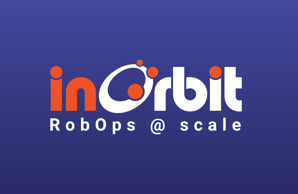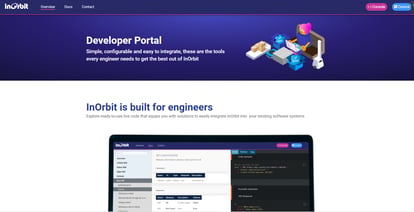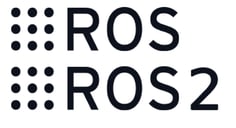Why we're giving developers the tools to build better robots
In the beginning...
I entered the robotics world 10 years ago, thanks to an opportunity from Willow Garage and its outstanding people. I joined them from the world of enterprise software with the goal of helping to bring robotics research into the world with production-ready solutions.
I fell in love with the humanity and professional excellence of the robotics engineers I worked with, and the interesting challenge of creating tools to make our lives easier. Co-founding InOrbit in late 2017 was a continuation of this journey. The goal of InOrbit has always been to find ways to help grow this thriving, yet nascent industry using my particular position and passion at the intersection of robotics and production enterprise software.
Co-founding InOrbit in late 2017 was a continuation of this journey. The goal of InOrbit has always been to find ways to help grow this thriving, yet nascent industry using my particular position and passion at the intersection of robotics and production enterprise software.
But building a sustainable business sometimes requires taking some paths that are not exactly aligned with our pure, core interests. That’s how we found ourselves focusing, during those first years at InOrbit, on working with companies with large fleets, and a strong focus on robot operations.
This was part of the bigger picture, but it also took us slightly away from my core passion of building for developers.
The time for developers
Through the operational work and success we’ve seen at InOrbit, I’ve discovered the time and opportunity to finally refocus on what I consider the origins of my story in this industry: making engineers’ lives better.
 This includes the launch of the InOrbit Developer Portal. This portal is a central place where we can interact with the development community and bring to light all the tools and initiatives that we’ve been working on - and this set of tools will inevitably continue to grow - making them even easier to find, use and contribute to. The Developer Portal comes paired with the InOrbit Console, where developers can perform advanced platform configurations, manage APIs keys and more.
This includes the launch of the InOrbit Developer Portal. This portal is a central place where we can interact with the development community and bring to light all the tools and initiatives that we’ve been working on - and this set of tools will inevitably continue to grow - making them even easier to find, use and contribute to. The Developer Portal comes paired with the InOrbit Console, where developers can perform advanced platform configurations, manage APIs keys and more.
Here are some of the tools included in this initial launch. We’d love to get your feedback on what tools are most useful or may be missing at the moment.
Robot data everywhere
We offer a one-line installer with automatic configuration for ROS-based platforms as a way for developers to get started with our platform as quickly and easily as possible. But we understand that some people want to tailor and control what data they publish, may not be using ROS at all, or want to opt-out from our robot-cloud connectivity layer and integrate robot data directly from their fleet managers.
These are all cases we’ve worked with in the past few years and are now supported through the Developer Portal:
- With the InOrbit Republisher, it’s easy to pick specific fields from custom messages to publish to InOrbit using an officially published open ROS package and a simple YAML configuration file.
- Connecting to a non-ROS system is made easy through our Robot SDK, which comes as a header-only C++ library that can be dropped into existing projects with no compilation pain.
- And our Edge SDK provides an easy way to deliver robot data on behalf of a fleet or a single robot from an on-premise fleet manager or a cloud proxy.
Bringing robot data to life
Connecting robots in a lab demo are great, but you quickly realize they need to become part of a bigger software ecosystem. That is why we’ve been working on various uses for integrating and repurposing robotics capabilities from the cloud through different APIs and off-the-shelf integrations:
- Our REST API is the first place to go to track robot activity and trigger actions. We have seen it used to integrate robots into Farm Management Systems, monitor and provide dynamic routing updates, and even for simple custom scripting.
- For a more specific use case such as Incident Management, we provide off-the-shelf integration to systems like OpsGenie, as well as a webhook interface to connect to any ticketing or incident routing system. You can start with our code sample that connects to Google Chat to get started faster.
- To accelerate the development of our user’s interfaces, we provide Embeds. This lets developers add RobOps functionality to their branded user interfaces to present high-level mission KPIs, track robot movement in real-time or present a set of customized remote actions to a field worker.
Making friends
Our platform is one small piece of the ecosystem and it will only make sense if the entire market grows. This belief justifies the work many of us want to do: contribute to ongoing efforts to set tools free that we believe should be available to anyone, irrespective of their use of the InOrbit platform.
That’s why we contributed to the Mass Robotics AMR Interop standard, which aims to make it easier to connect different AMR vendors with adopting companies. We published a ROS2 package to make it easier to connect any ROS2 robot to a compliant server and extended our platform to allow connections from compliant devices. We’ll be talking even more about this subject at ROS World later this week.


Interoperability is an area of general interest, and we’re closely tracking several other related efforts such as Open RMF and VDA-5050 to see where it would be most helpful to contribute our expertise. For the latter, we’ve even created a code sample to connect VDA-5050 to InOrbit, which doubles as a starting point for how to use the InOrbit Edge SDK.
Sharing our work and making the lives of engineers even a little bit easier makes it all worthwhile.
To infinity and beyond
We hope the Developer Portal, together with the recently announced Free Edition, will give helpful tools to the builders who are creating the future of robotics.
We’re eager to find out which pieces turn out to be most useful so please give it a try and let us know what you think.

